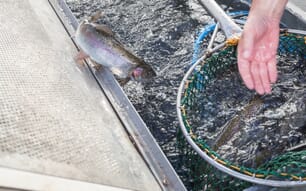Speaking to TheFishSite, Ronnie Soutar, veterinarian and Managing Director of Aqualife, explained that the merger will allow Aqualife to diversify its operations whilst also keeping a focus on its main market - Norway.
The merger will also allow the company to strategically be part of a market that is moving towards multivalent vaccines and machine vaccination.
Also part of a wider company restructure, the merger will ensure the best possible service for existing and new customers in Norway, as well as better support for Aqualife's teams, Mr Soutar continued.
Researchers in Norway and the US have used genome sequencing to identify the culprit of a gill disease that has been ravaging fish farms for the last 20 years - the poxvirus.
This is the first ever genome-sequencing of the poxvirus in fish. In addition, a test has been developed that is very useful in monitoring the incidence of the virus.
A new study from the Johns Hopkins Center for a Livable Future (CLF) has found that around 47 per cent of the edible US seafood supply is lost each year, mainly from consumer waste.
This huge amount of waste also adds to other problems threatening global seafood resources such as overfishing, pollution and climate change, says the study.
The researchers found the greatest portion of seafood loss occurred at the level of consumers (51 to 63 per cent of waste). Sixteen to 32 per cent of waste is due to bycatch, while 13 to 16 per cent is lost in distribution and retail operations.
To illustrate the magnitude of the loss, the authors estimate this lost seafood could contain enough protein to fulfill the annual requirements for as many as 10 million men or 12 million women; and there is enough seafood lost to close 36 per cent of the gap between current seafood consumption and the levels recommended by the 2010 US Dietary Guidelines.
In other news, during the 2015 World Seafood Congress in Grimsby, UK, guest speaker at the conference, Sir Ranulph Fiennes, spoke to TheFishSite about his adventures and his run-ins with fish.
You can read the interview, here.




